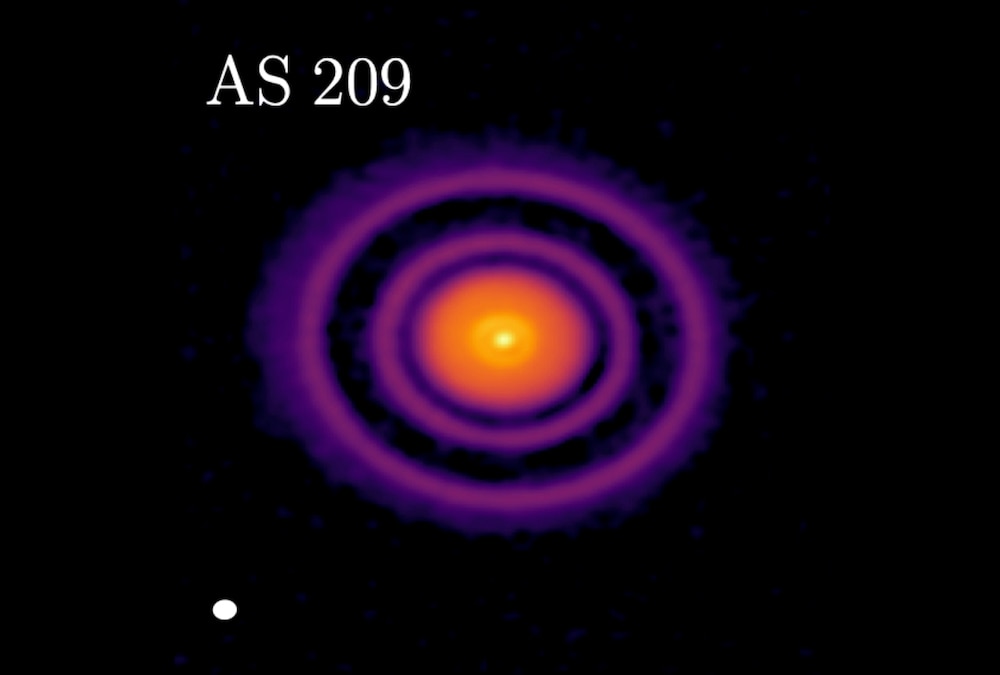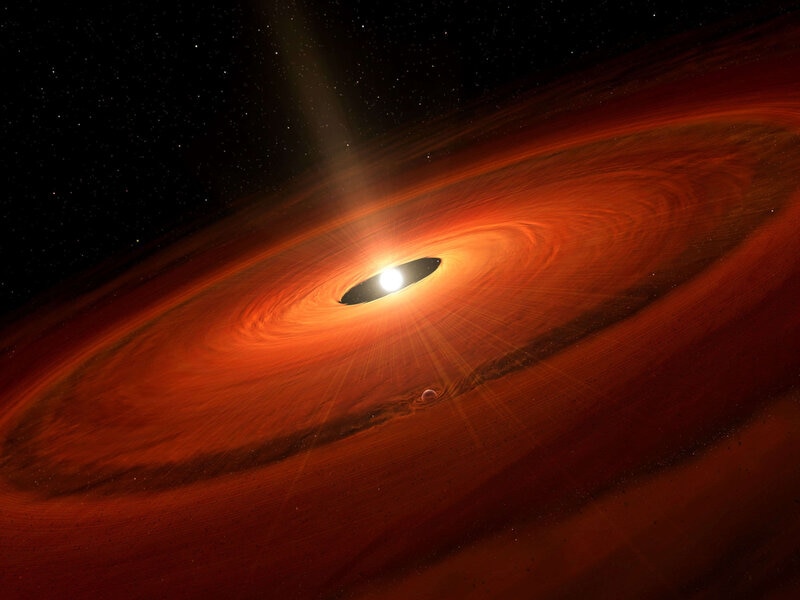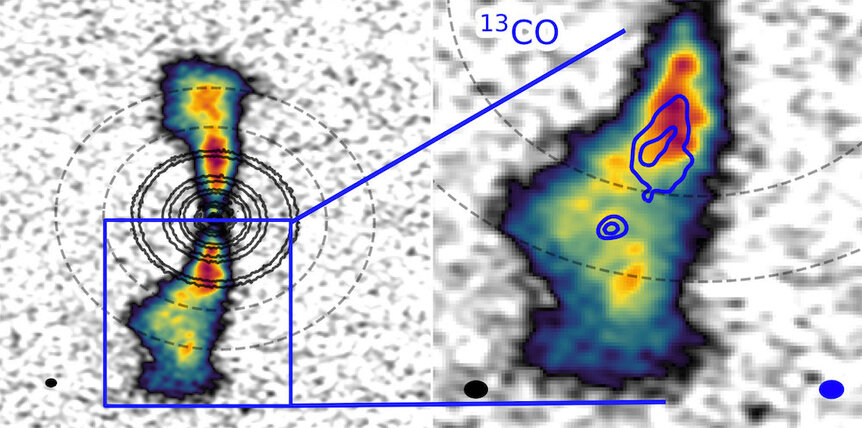Create a free profile to get unlimited access to exclusive videos, sweepstakes, and more!
A still-forming exoplanet predicted to exist is found in exactly the right spot
AS 209's Jupiter-sized planet seen stirring things up around the young star

The nearby star AS 209 is pretty astonishing.
Located about 400 light-years from Earth, it’s a little bit more massive than the Sun and very young, probably 1 – 2 million years old. It’s part of what’s called the Ophiuchus star-forming region, a sprawling series of dust and gas clouds where stars are actively being born.
Observations using the Atacama Large Millimeter/submillimeter Array, or ALMA, show that it sports a circumstellar disk, a flattened disk of gas of dust from which it formed. This is common around young stars, but this one stands out because it’s broken up into a series of annuli, rings: at least seven of them, separated by gaps in the material.
One of the outer gaps is probably caused by a gas giant planet forming there with about the same mass as Jupiter; as it orbits the star it hoovers up material, carving that gap. One of the inner gaps may be due to an orbital resonance, where material orbits the star twice for every one time the planet orbits. It gets yanked by the planet’s gravity in the same way that pumping your legs can make you go higher on a playground swing, so material at that distance from the star gets pulled away, leaving a gap. This is the same reason Saturn’s rings have gaps.
But is there actually a planet there? New observations again using ALMA strongly support its existence [link to paper]. The astronomers who did the work find a bright spot right where the planet should be, and also a disturbance in the circumstellar gas at the same spot, both indicating a large mass must be there.
The astronomers looked at light emitted by carbon monoxide gas, which is common in cold disks. They find a bright, unresolved spot — meaning it’s just a dot in images — right in the middle of an outer ring gap about 30 billion kilometers out from the star. The amount of gas is not huge, about a tenth of the mass of Jupiter, which is about 30 times the mass of Earth. Still, they think this can only be explained as a disk of gas surrounding the planet itself, called a circumplanetary disk. That’s expected here: As material falls onto the planet from the circumstellar disk it will form a disk around the planet like water piling up as it circles a drain.
This would only be the third circumplanetary disk ever seen, and the very first time gas was ever seen in one. The previous two were detected via the light from dust, which is made up of tiny grains of solid rocky material. Weirdly, no light from dust was seen from the disk around AS 209’s planet. That puts an upper limit to the amount of dust at a mere 0.027 times Earth’s mass, which is about twice the mass of the Moon. That’s a small fraction of the percent of the gas seen, which is unusual, and it’s not clear why that might be.
There’s more evidence of the planet as well. The gas in its disk gives off light at a very specific wavelength — think of it as a color — and with ALMA it’s possible to observe light at multiple wavelengths. As the gas in the rings moves around the star we see some of it heading toward us and some away, inducing a Doppler shift in its light. Right at the planet’s position the astronomers found the velocity of the gas was disturbed, moving at different velocities, which again is what you expect if a planet truly is there. Its gravity will accelerate the gas in the rings nearby, smearing it out and changing its velocity.
They find a planetary mass of about 1.3 times that of Jupiter, which is consistent with earlier estimates of what a planet in that gap might have. I wrote about this in 2019 when the planet was predicted to exist, and noted that this all by itself is incredible: A planet with Jupiter’s mass forming in only about a million years. That means matter fell onto the planet at an average rate of about 100 billion tons per second for a million years! That’s very roughly equivalent to getting slammed by a dinosaur-killer-sized asteroid every 15 seconds for ten thousand centuries.
Planetary birth is rough.
But it’s also beautiful. AS 209 is one of many, many examples of young stars with disks around them, including many with rings that may be formed due to the presence of planets. The more of these we find, and the better we can see them, and the better we can figure out how planets are born. That includes our own. Earth formed well over 4 billion years ago, but that process is replicated in other stars. Watching AS 209 is as if we’re holding up a mirror to our own past, allowing us to better understand how we ourselves came to be.




























